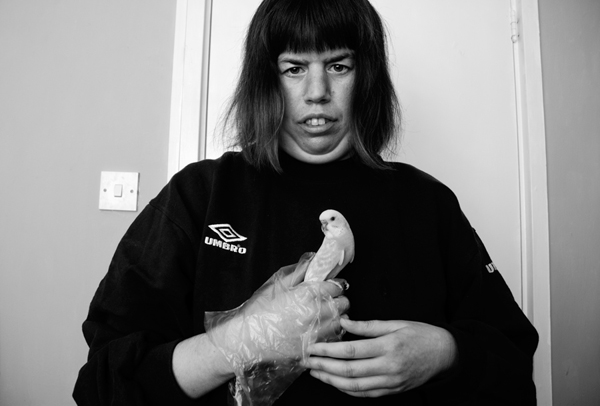For the last 18 months, together with people on – or far beyond – the outskirts of my local Market Towns community, I have been recording (through collaborative environmental portraiture, audio and video interviews coupled with straight documentary shoots) their life stories and memories, musings, hopes and struggles.

I do this with a passion and belief that the photographs we make have a weight and longevity beyond our time here. These images have an ability to communicate a story long after the characters have departed; they are time capsules awaiting discovery.
I’m self-taught and my photographic inspiration comes from many means, Eugene Richards, Eli Reed, Brenda Keneally, and W Eugene Smith are of huge importance to me as photographers. Also, the documentary work of John Pilger, cinematography of Robbie Muller, film directors Mike Leigh and Ken Loach, painters including R B Kitaj, David Hockney have all played a part in my approach to image-making.
I had a profound moment a few years past when an elderly friend, someone that I’d known from childhood, passed away days after I took the final portrait of his life. Both that experience and the gentlemen’s own persuasiveness toward the issue, convinced me to pursue photography: to permit myself to allow a then-embryonic addiction, to recognize that photography was within me before I’d ever picked up a camera.
We’d talk often, my memories blur and blend; I remember him telling me of life in the 30s, and the Labour Party. I recall that he taught me to waltz. And he taught me so many other things: to listen more, to ask more questions of people, to understand that on your own doorstep there are people with a universe of stories within them, that the place where you are can answer every question you have, you just have to look hard enough.
I started evolving my style from pure street photography to fully engaging with the people, the community that appeared dead, at the least, dormant around me. From chance meetings on the street I gradually began to let these photographic encounters develop and began shooting people at home, recording interviews and during the process, making friendships, finding myself in a kind of homegrown community of people all joined together by photography, location and circumstance.
I borrowed equipment and shot as often as I could, fitting in shoots around working as a home carer for my family and soon I realised what had begun as a loosely themed project had evolved into something far greater. I’ve become more aware of the people and lives around me and for that, I have the people I document and photography to thank.
Now, I devote my photography to social documentary and environmental portraiture. Both genres I feel particularly at home with. Outside of the story and lives of the people I make photographs with, light is of singular importance. Almost always, I am shooting within an individual’s residence, and the natural light there lends so much atmosphere to the resulting images. Plus, the natural light, it’s real, it’s there, and it’s with the subject and I as we are talking. Light is everything.

These are moments of daily endurance that in a generation will have passed forever. The Market Town series, I’ve come to learn, is not a project, but a product. A product born from where and when the people I photograph and I are from. I know for as long as we’re here, I’ll continue to make this series; until the bonds of this small town’s inertia are breached. For any or all of us.
Find out more about JA Mortram by checking out the links below.
Links:
Website: http://www.wix.com/jamortram/jamortram
Mobile Website: http://m.wix.com/jamortram/jamortram
Facebook: https://www.facebook.com/JAMortram
Twitter: https://twitter.com/JAMortram
Leave a Reply